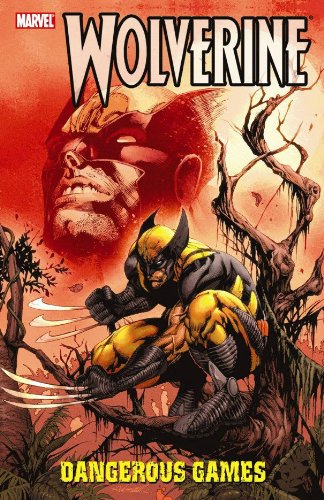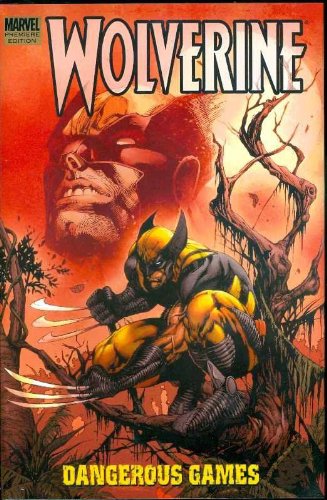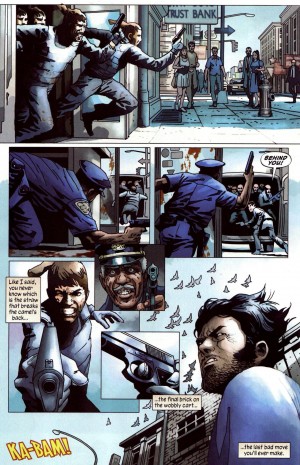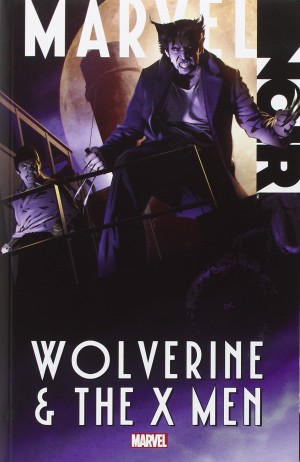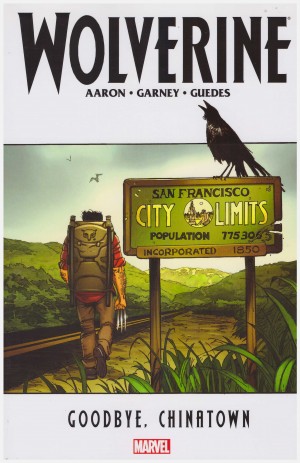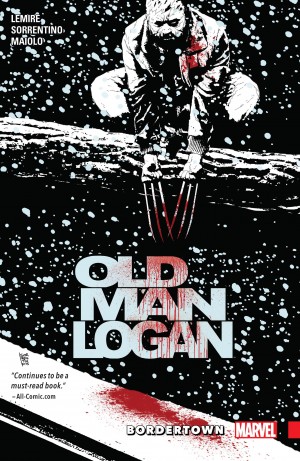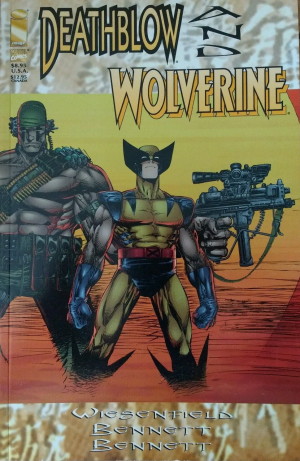Review by Ian Keogh
Dangerous Games collects what were previously issued as four Wolverine one-shots in 2007-2008, and they’re a poor excuse for a cobbled together graphic novel. Inspiration is at a minimum from the writers of the longer material, although generally good on the shorter tales, while the art is of mixed quality throughout.
Standing head and shoulders above the overall mundane quality is ‘Firebreak’, Mike Carey’s compactly plotted piece about a couple having an awkward weekend at their forest cottage that becomes infinitely worse. Scott Kolins might not appear the ideal artist for what’s a long, desperate chase sequence as Wolverine and company attempt to outrun a forest fire, yet he serves up exactly what’s needed. Carey further handicaps matters by Wolverine being temporarily blind, secreting other threats in the forest, and seeds his surprises well, sustaining the tension to the end.
Marcelo Frusin’s art on ‘Deathsong’ (see sample page) is excellent in evoking a grimy criminal world contrasted with the splendour of the church, but it’s wasted on a plot that Gregg Hurwitz stretches to infinity and beyond. In the late 1940s Will Eisner covered the last ten minutes of a killer’s life in a beautifully compact seven pages. Hurwitz extends that to hours over 36 pages, but without the incident to fill them.
Simon Spurrier has something to get off his chest in the title strip. In 2004, much to the disgust of the British upper classes, hunting with dogs was banned in the UK, and his tale transports a bunch of British aristocrats to Louisiana, where hunting Wolverines is still legal. The occasional nice verbal quip is far outweighed by the poorly caricatured British huntsmen from a British writer who ought to know better, and several unlikely elements of plot convenience, among them a dog able to sneak up on Wolverine. There’s also little purpose to fragmenting the story by jumping back and forth through time as the surprises it generates are minimal. Ben Oliver’s art just about works.
Jerome Opeña is far better on the following tale, Rick Remender’s brief look at a Wolverine in a Thai Buddhist temple. Will he stop the threat without resorting to violence? Yeah, it’s that predictable, but fun and well drawn.
Christopher Yost conceives a viable list of methods by which Wolverine can be killed, but they’re the only imaginative elements of his tale about Wolverine attempting to save a former X-Men trainee. Koi Turnbull’s a competent artist but a poor storyteller. Todd Dezago’s tale makes better use of a good idea, and there are flashes of excellence about Steve Kurth’s art, although also some awkward poses. This short back-up is manifestly better than the longer tale it originally accompanied in Killing Made Simple. There’s something of Paul Pope about the art of Vasilis Lolos in the remaining short story, which is no bad thing, and there are some promising touches about Macon Blair’s script, but it’s tryout material, not an attention grabbing Wolverine extravaganza.
By all means pick up Firebreak as an individual comic, but there are many decent Wolverine collections (see recommended books), and your money’s better spent on them.
